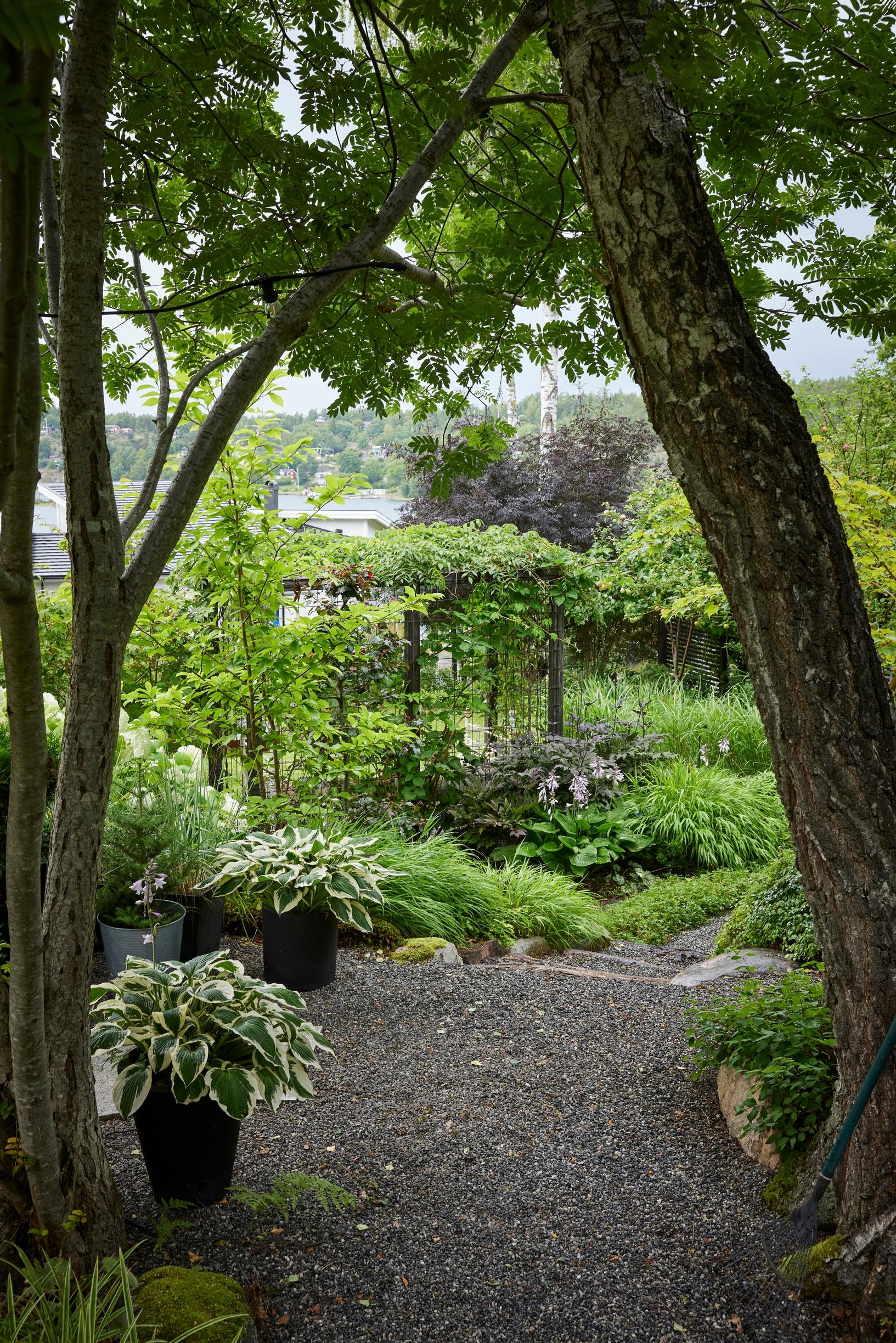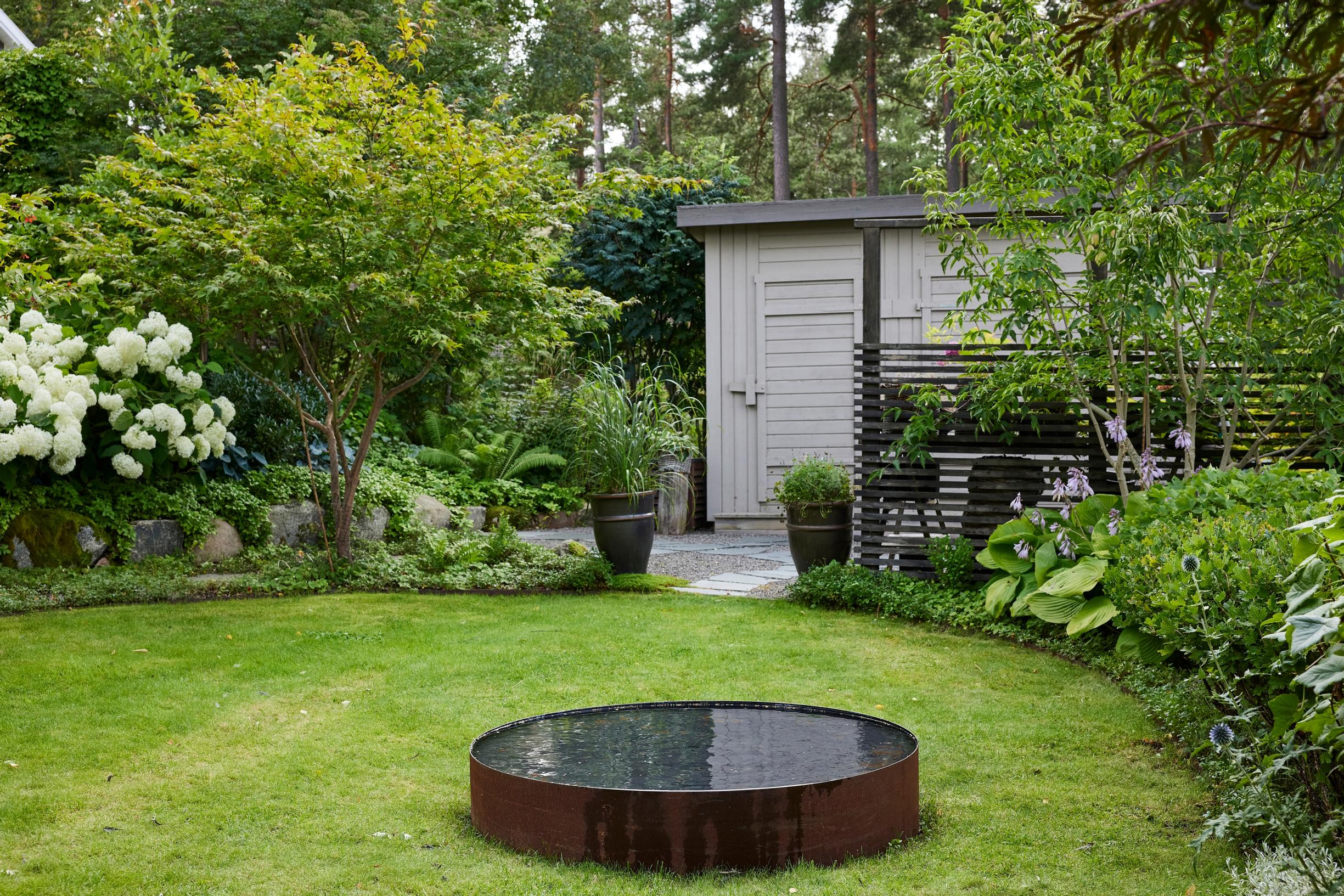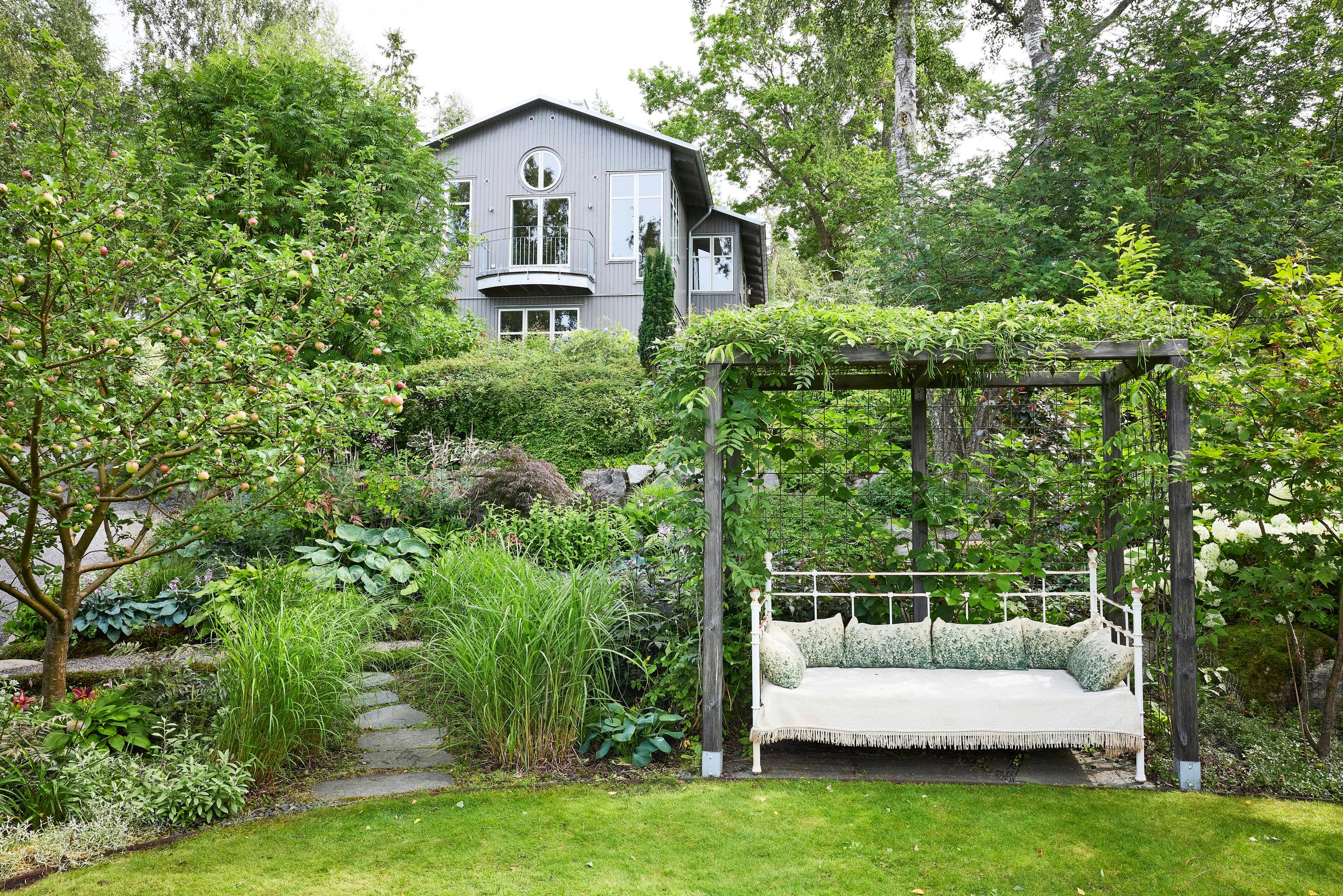
Johanna’s Moosegarden: foliage is the star of the show in one of Sweden’s best-known gardens
When her family got tired of hearing about plants, Johanna Antonsson went on Instagram to find fellow garden enthusiasts. Now more than one hundred thousand people follow her account, theMoosegarden, to keep up with the goings-on in her garden. A garden designer by profession, Johanna enjoys experimenting with delicate and unusual plants in her hillside garden in the Stockholm archipelago, but she also appreciates sturdy, easy-care shrubs and perennials.
Delicate, succulent, silvery, round, deeply lobed, purple, downy. Walking up the plant-covered slope from the driveway toward the house, you can’t help admiring the variety of leaf colors and shapes, and their artful combinations.
“As you can see, it’s really about the leaves rather than the flowers. We don’t have many blooms,” says the creator of the garden, Johanna Antonsson.
Many will recognize this hillside garden from Instagram, where more than one hundred thousand people follow Johanna’s theMoosegarden account. The name comes from its location on the island of Älgö (Swedish for “moose island”) in the Stockholm archipelago. The garden has also wowed professionals. In 2020, the jury of the Allers Trädgård magazine named it Sweden’s Garden of the Year.
When Johanna and her partner Björn bought their 2,000-square-meter north-facing lot more than 20 years ago, the trees grew so densely that they didn’t even notice it had a sea view.
When they were building the house in 2001, they thinned out some of the forest at the same time. However, Johanna was determined not to clear the lot completely.
“We decided right away to preserve many of the trees as well as the blueberry shrubs covering the ground. It was important for us to preserve the nature. The trees aren’t in the way—they add depth to the view, and inside the house it feels like being in a treehouse, looking out and seeing the foliage.”
Blueberry shrubs and lichens still cover much of the rocky upper part of the lot. Closer to the house, nature subtly transitions into a woodland garden packed with ferns, foliage perennials, and rhododendrons. Johanna admits she is a rhododendron convert.
“I used to dislike rhododendrons when we moved here. Now I grow them especially for their leaves.”
Among her favorites is the low-growing rhododendron yakushimanum ‘Koichiro Wada,’ with its soft, downy leaves in a silvery shade.
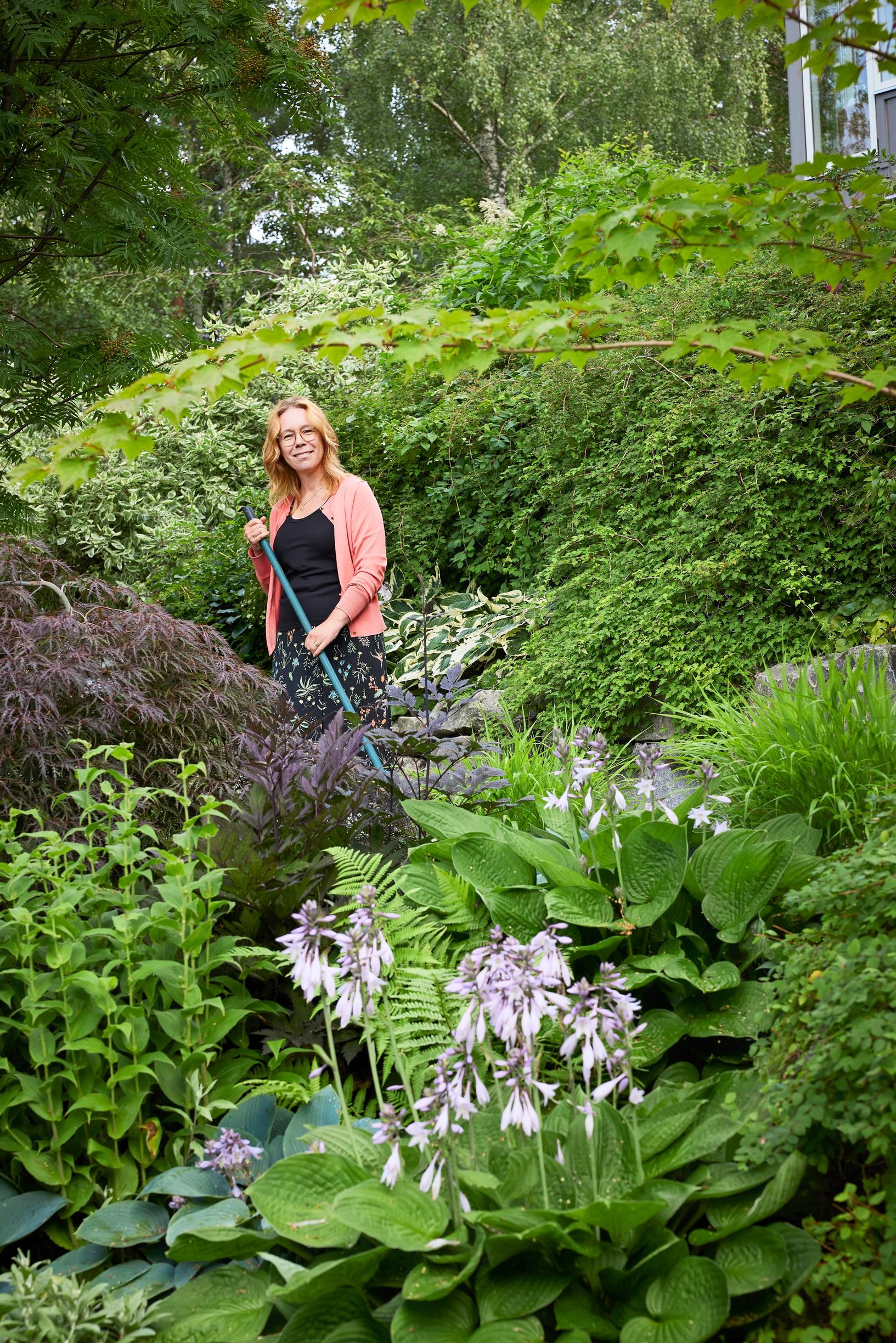
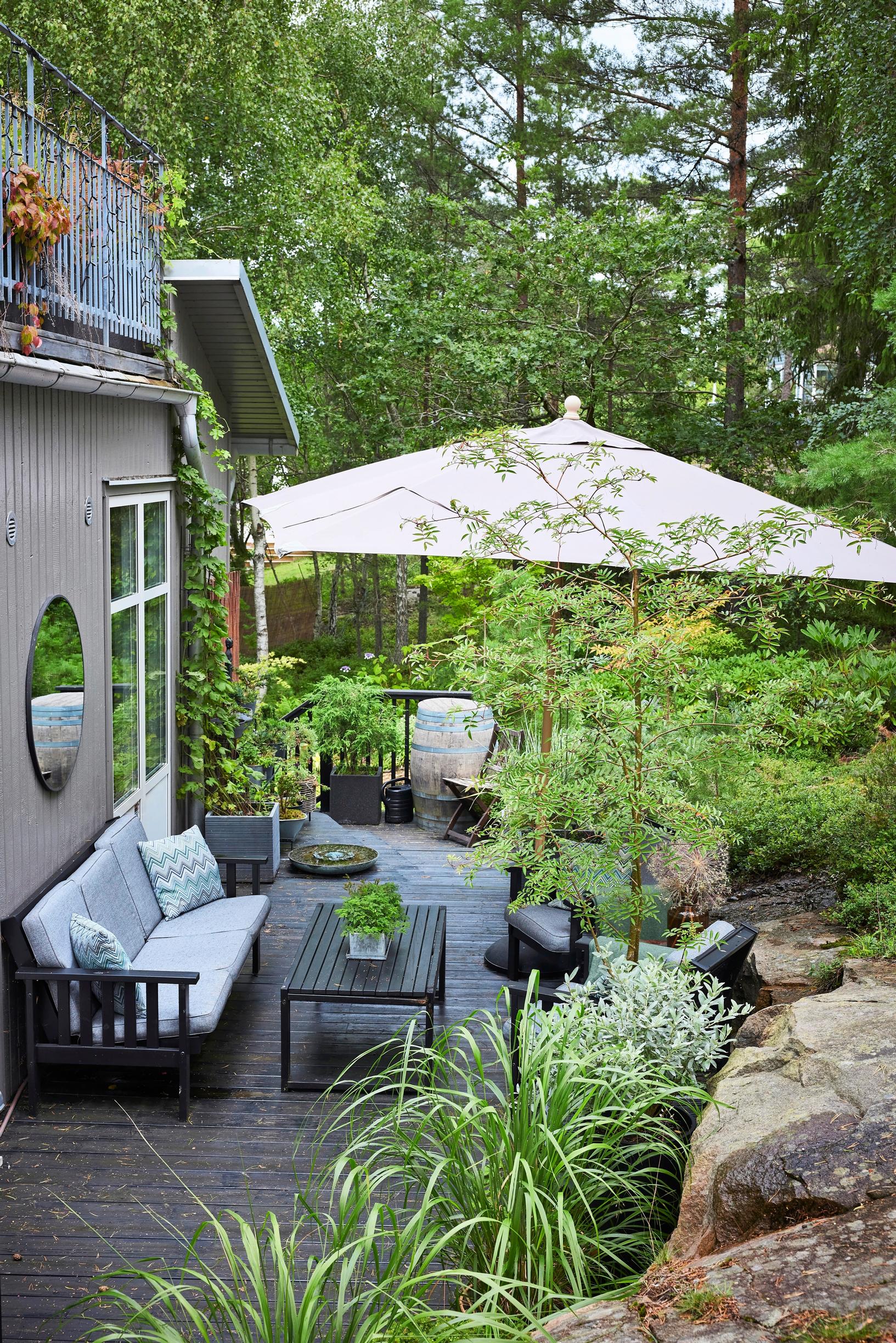
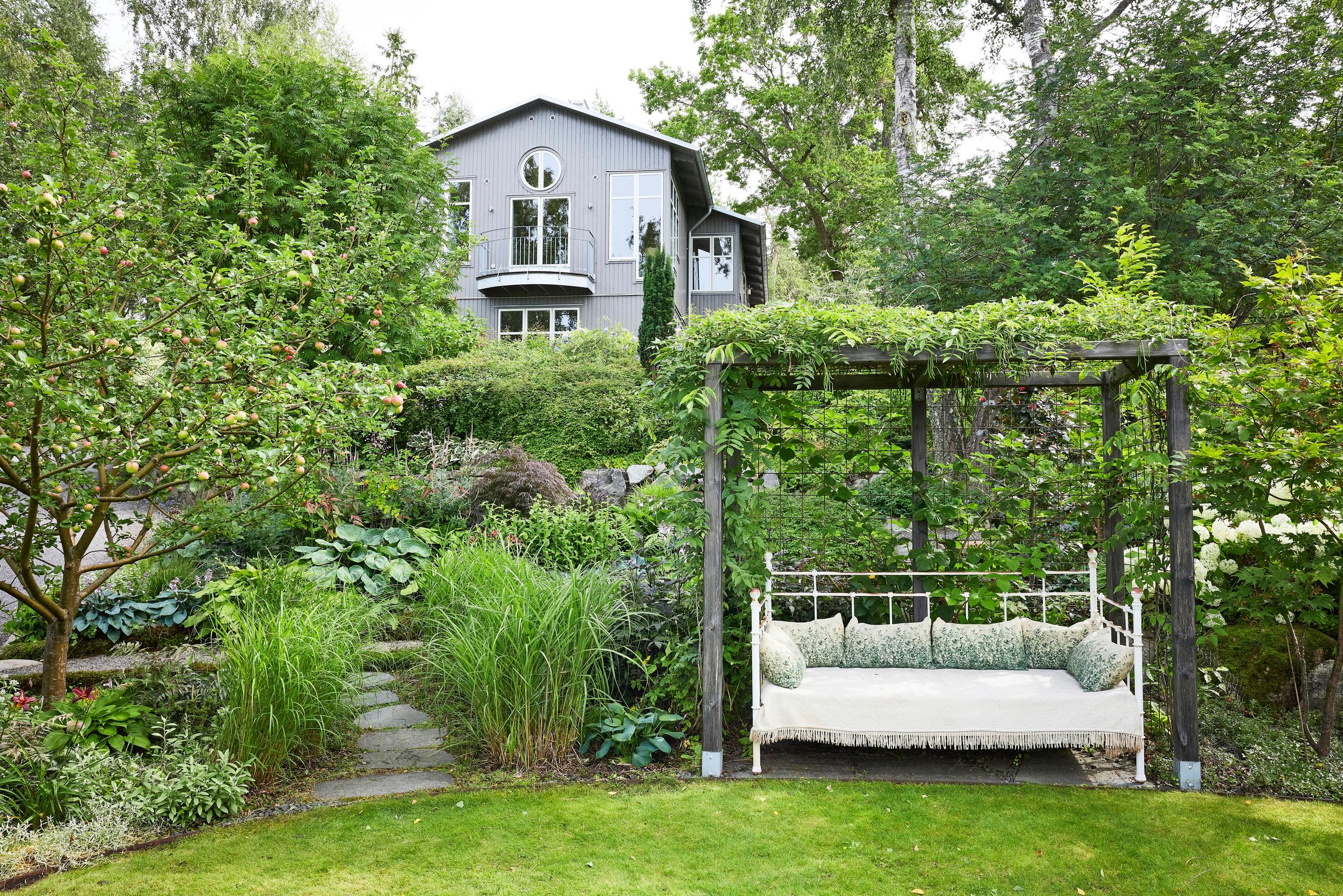
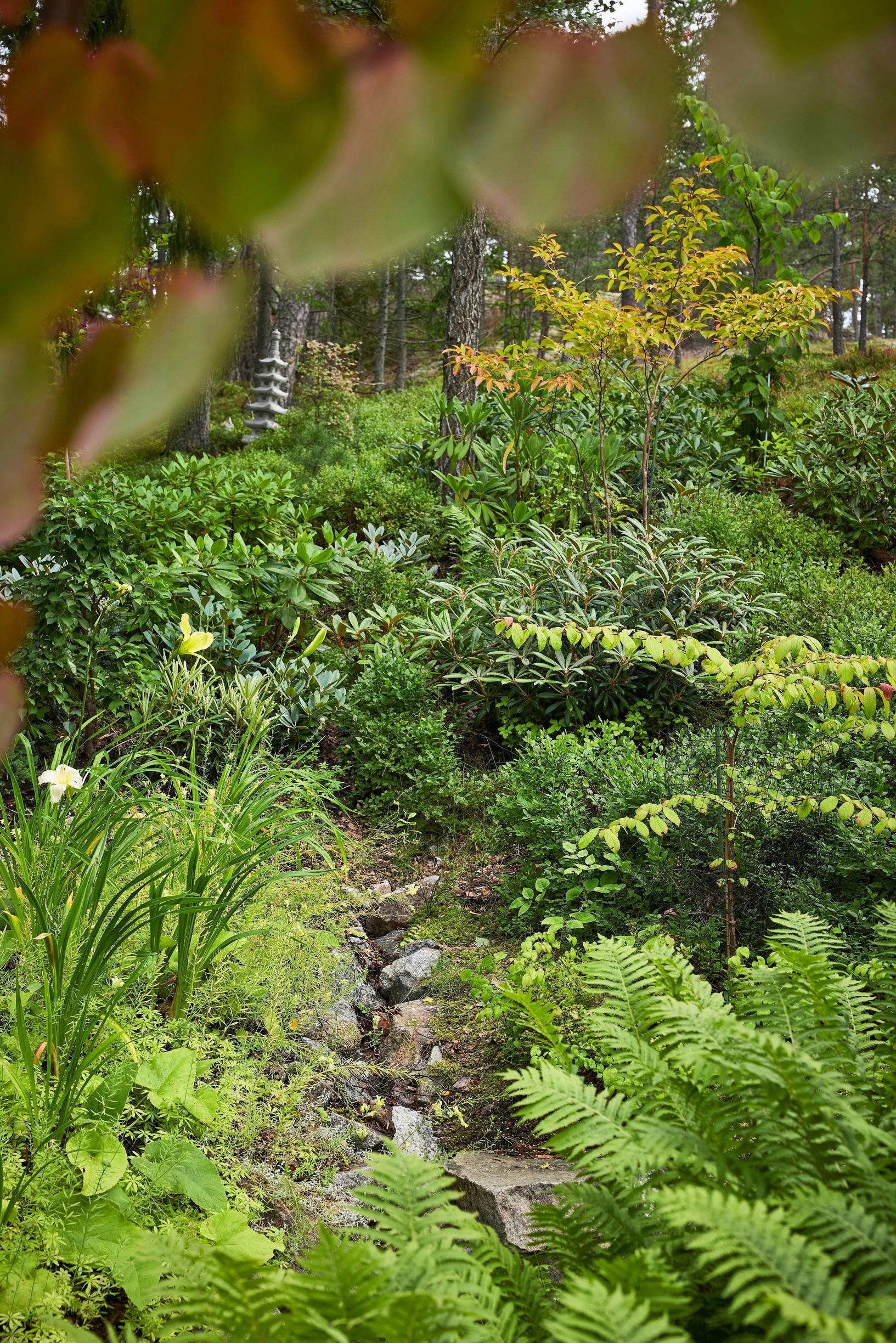
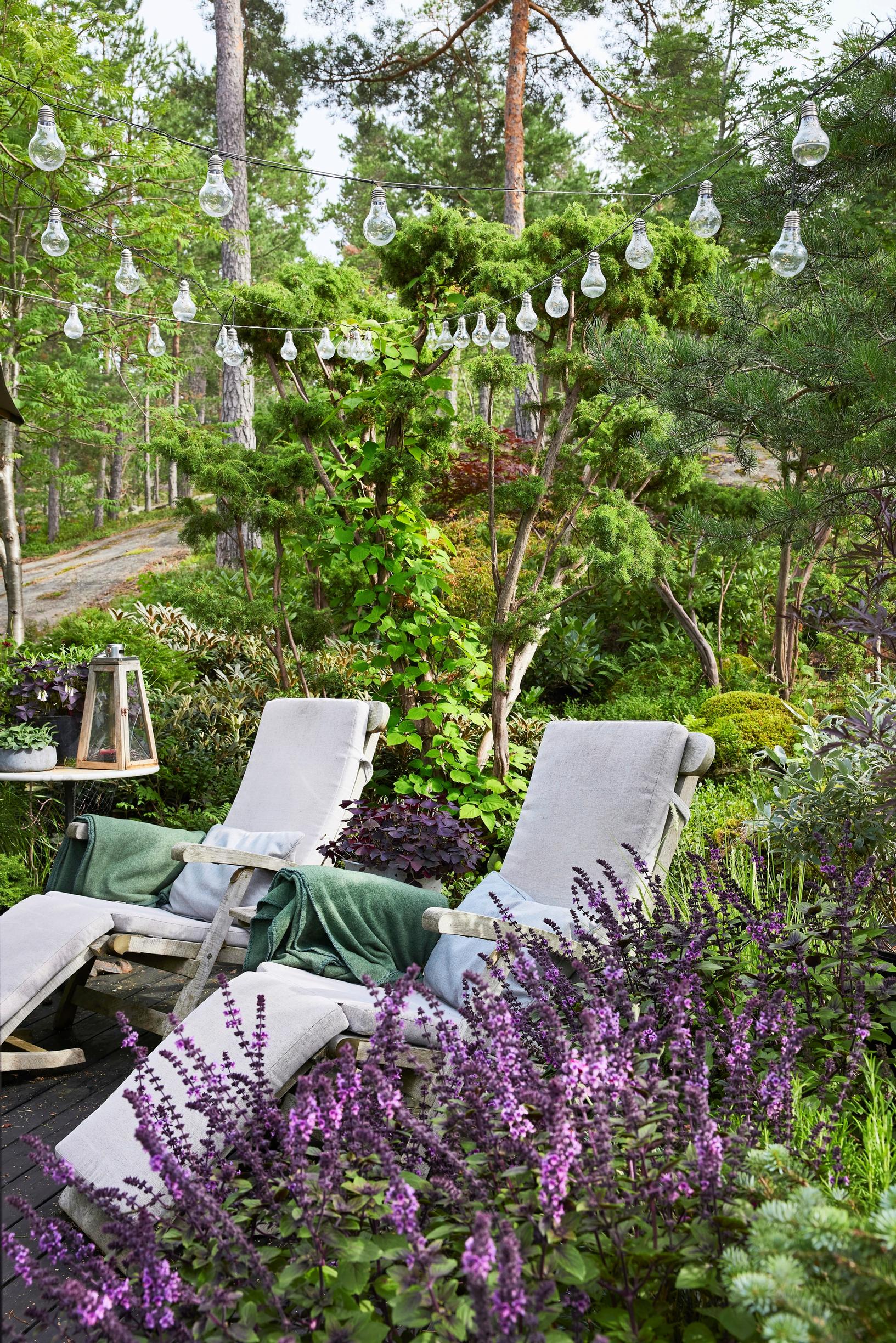
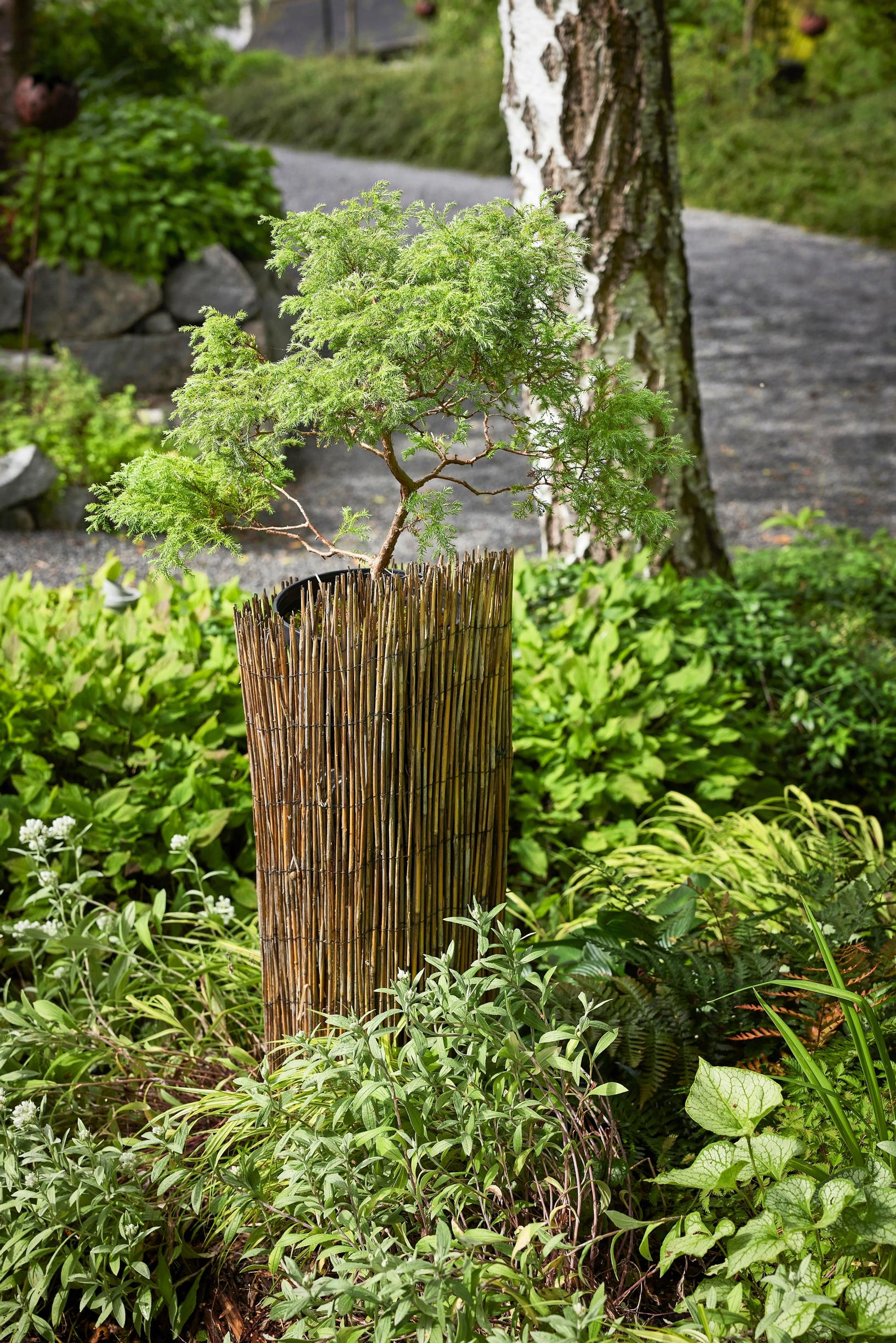
When Johanna set out to design the garden, it was important for her that it blend smoothly into the surrounding nature and harmonize with the house. That natural look extends to the materials as well. The slope is terraced with walls built from natural stones of different sizes, and Johanna has used decaying logs for edging the paths. Both the logs and stones came from the lot itself.
“I think of it as painting with structures, colors, and the foliage of plants,” Johanna says of her design approach.
From the start, Johanna also thought about how she would want to maintain her garden. Mowing a slope is hard, so there’s just one small circular lawn at the lower, flat part of the garden. There’s no exposed soil anywhere. Johanna relies on groundcover plants, such as barrenwort, pachysandra, and sweet woodruff, which leave little room for weeds. On the gravel paths that cut across the slope, she uses a weed burner to eliminate unwanted plants.
Johanna uses lots of shrubs in her garden, such as stephanandra and the low-growing snowberry, which further simplifies maintenance. They also help secure the slope.
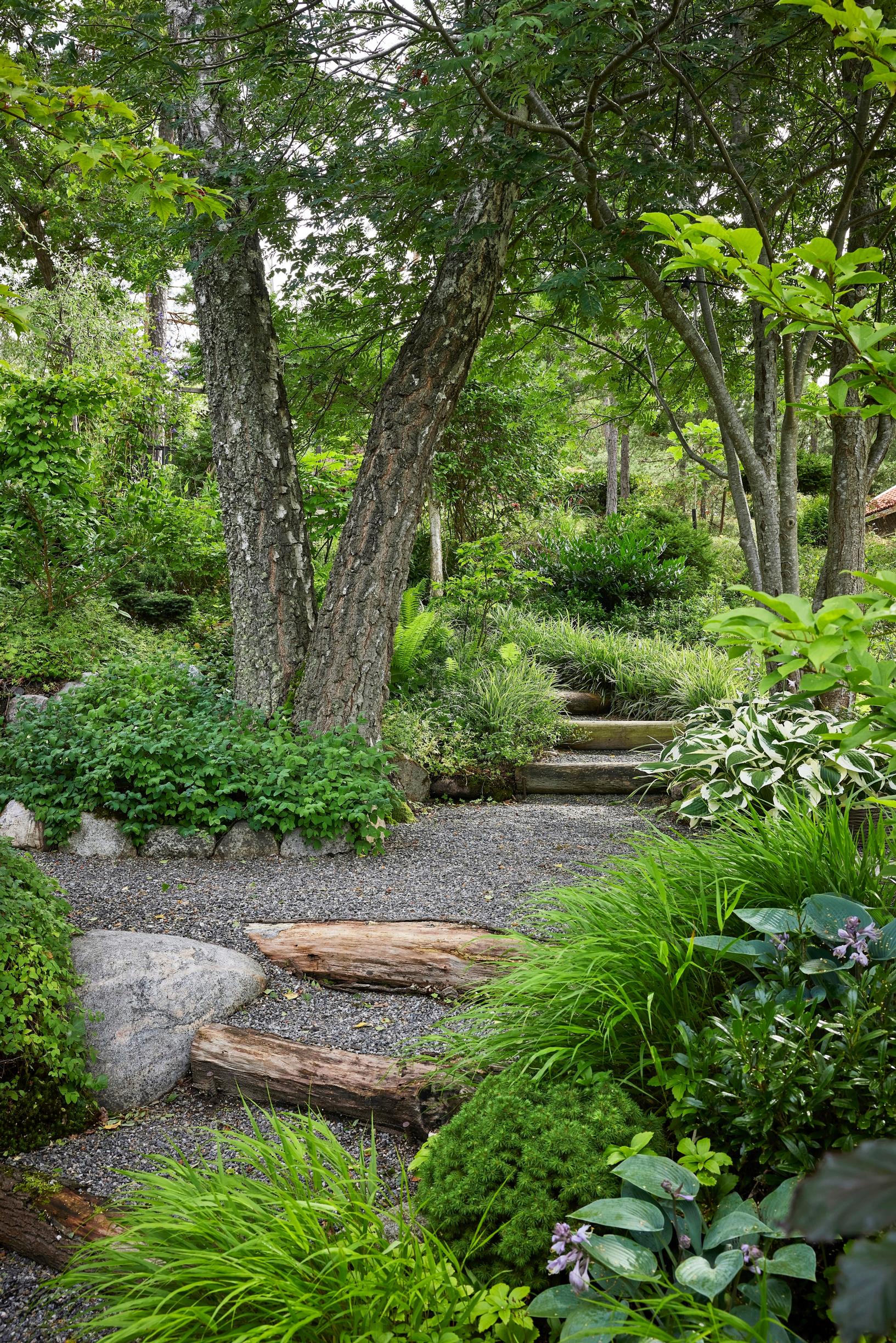
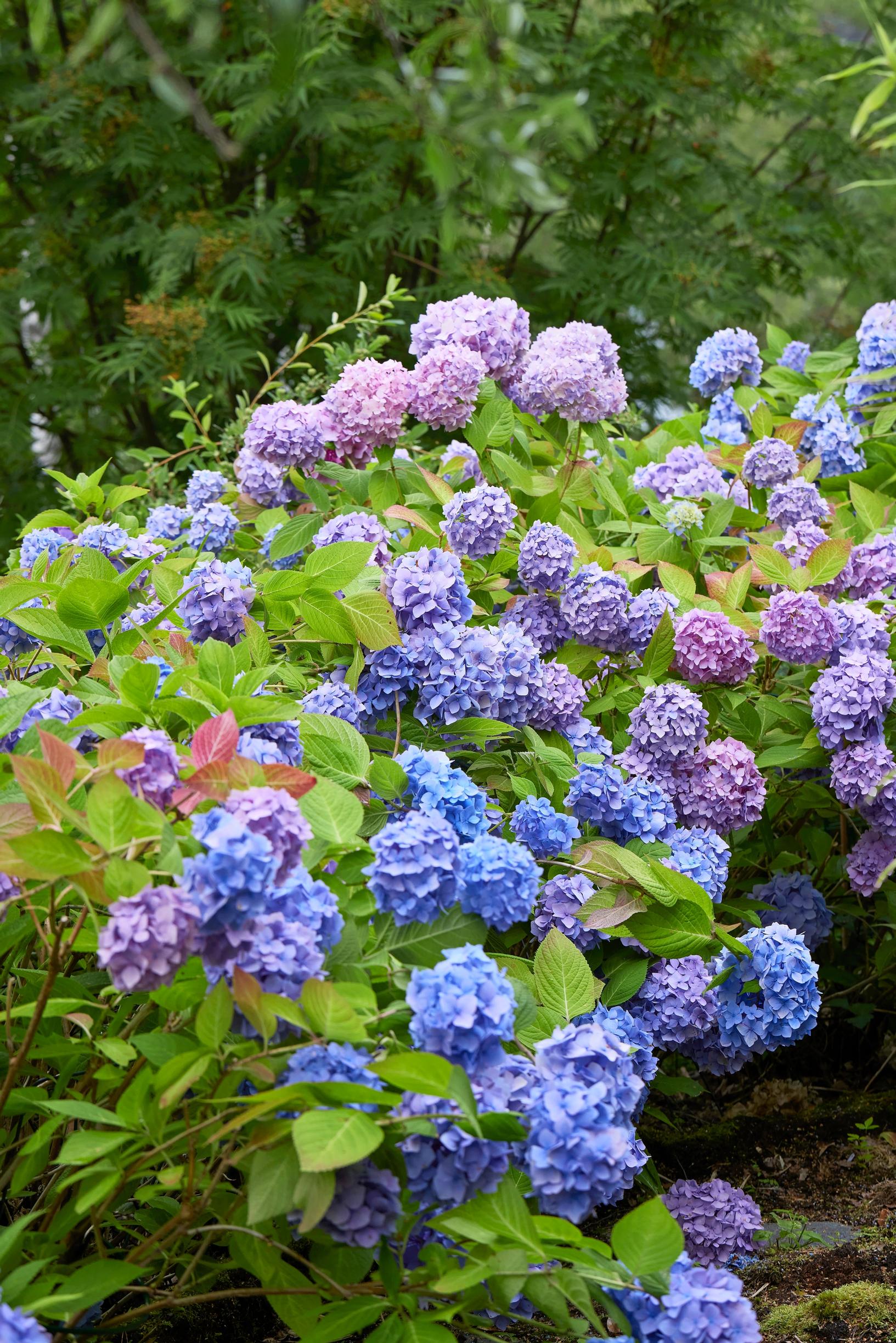
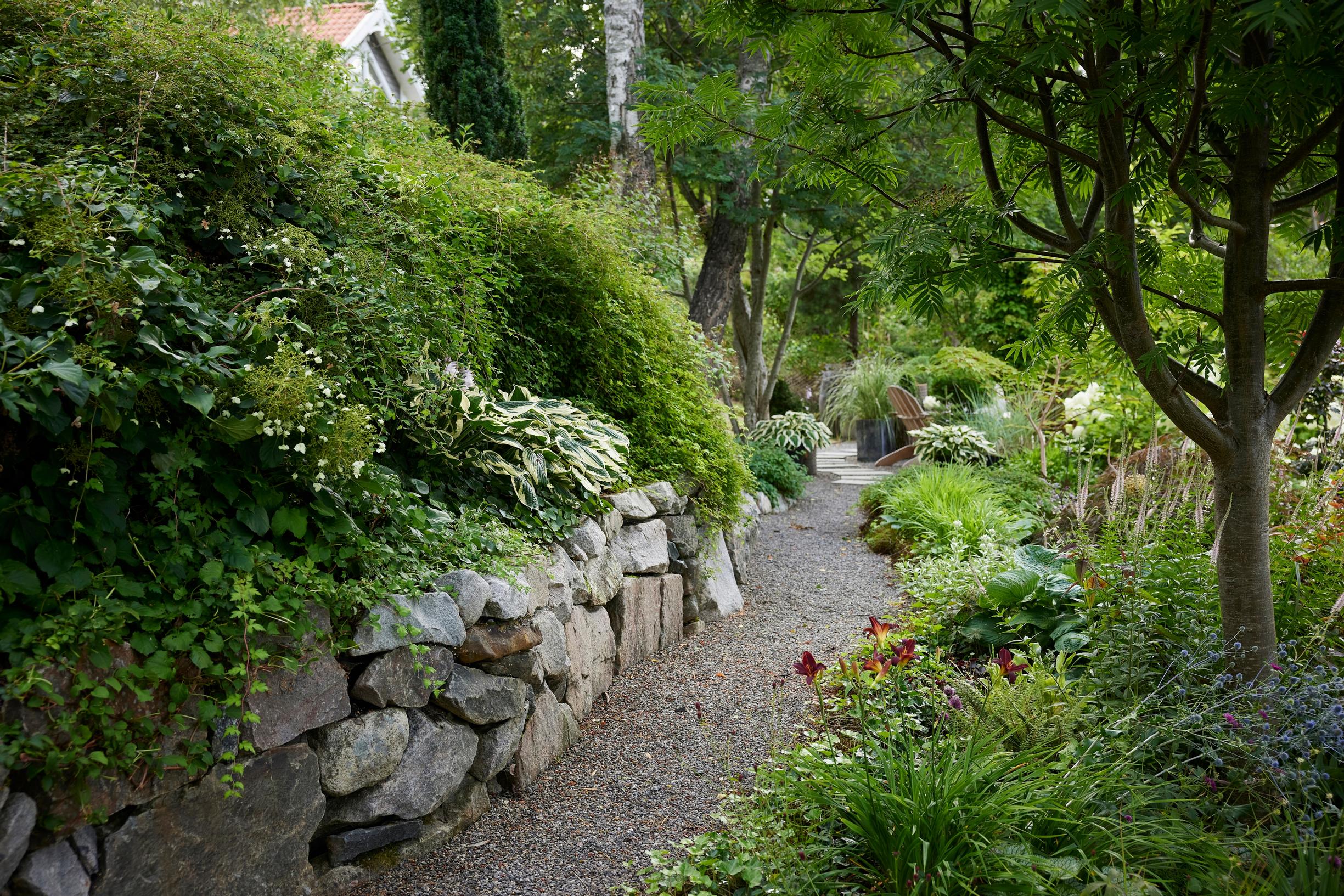
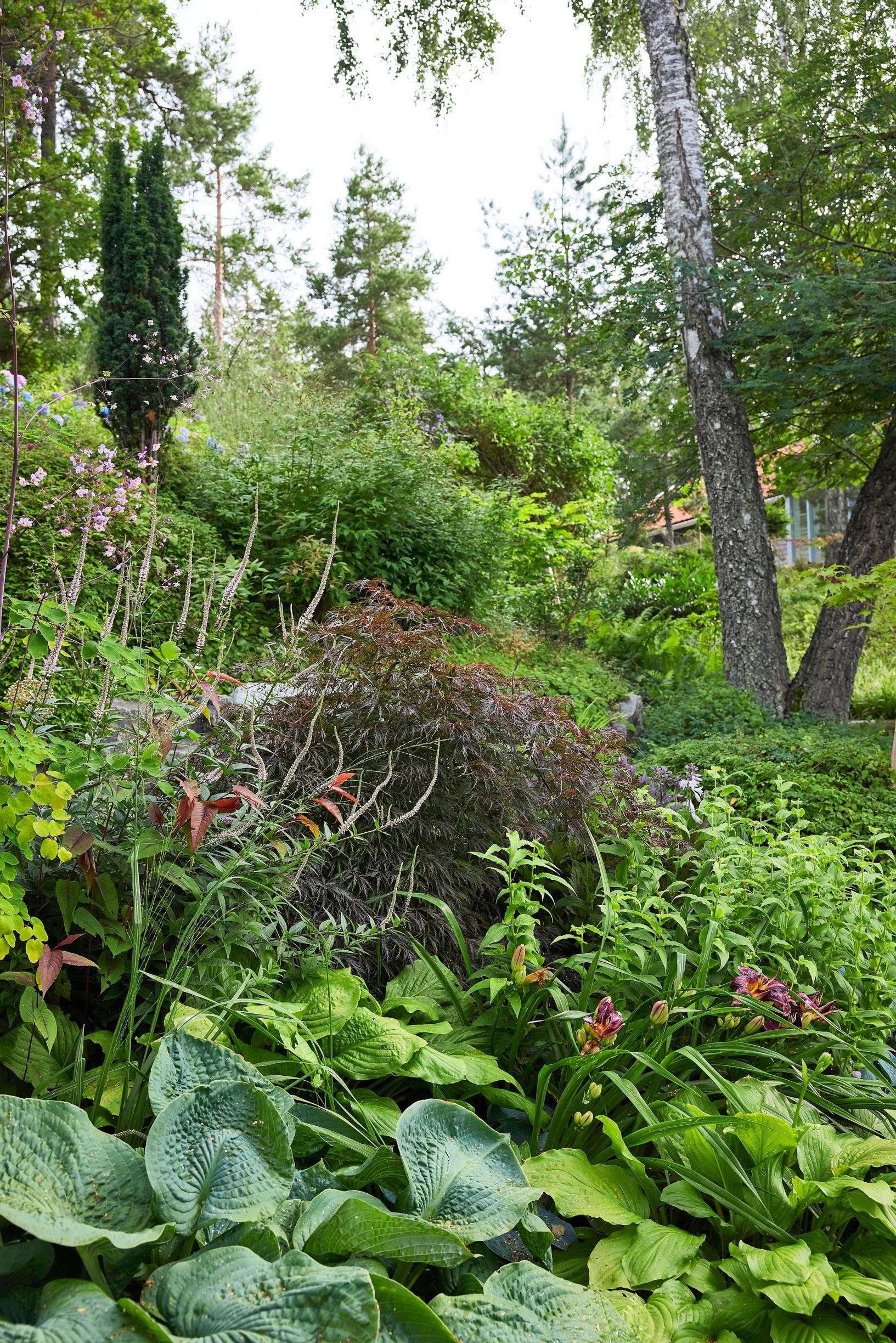
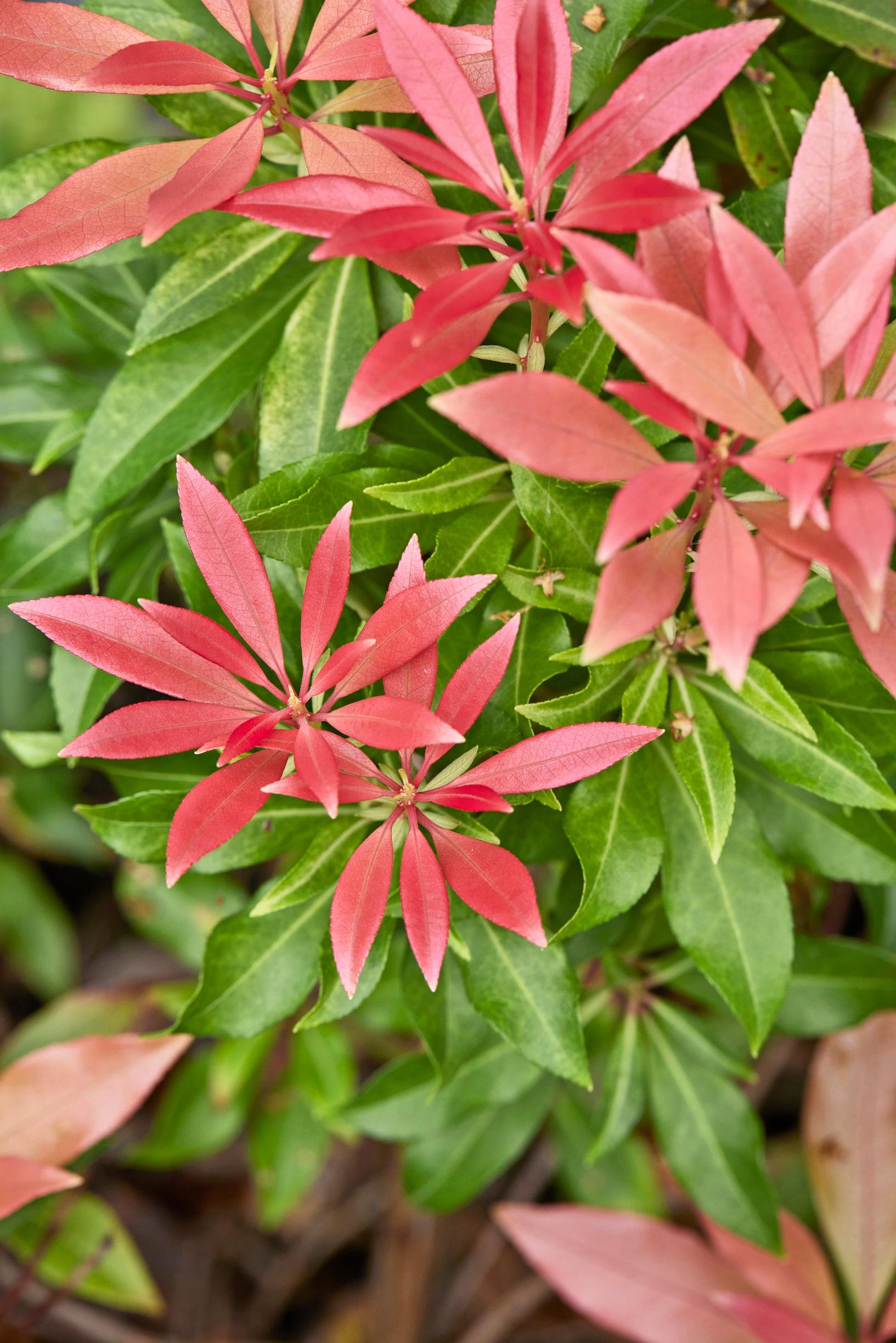
Although the garden features many delicate rarities—like Japanese maples, magnolias, kousa dogwood, and a dove tree—Johanna also relies on hardy favorites such as junipers, rowans, and perennials like Bowman’s root.
“Ordinary plants can be used in fresh new ways. For instance, I’ve trimmed a mock orange into a sphere.”
As summers in the archipelago are dry, some plants—such as hydrangeas—need watering. Johanna also prunes her shrubs and trees to keep them airy and at a manageable size. She spreads the clippings on the ground below the plants right away, letting them compost in place. It’s easy and enriches the soil.
“It’s worthwhile to keep the leftover plant material in your garden. It’s food for the plants.”
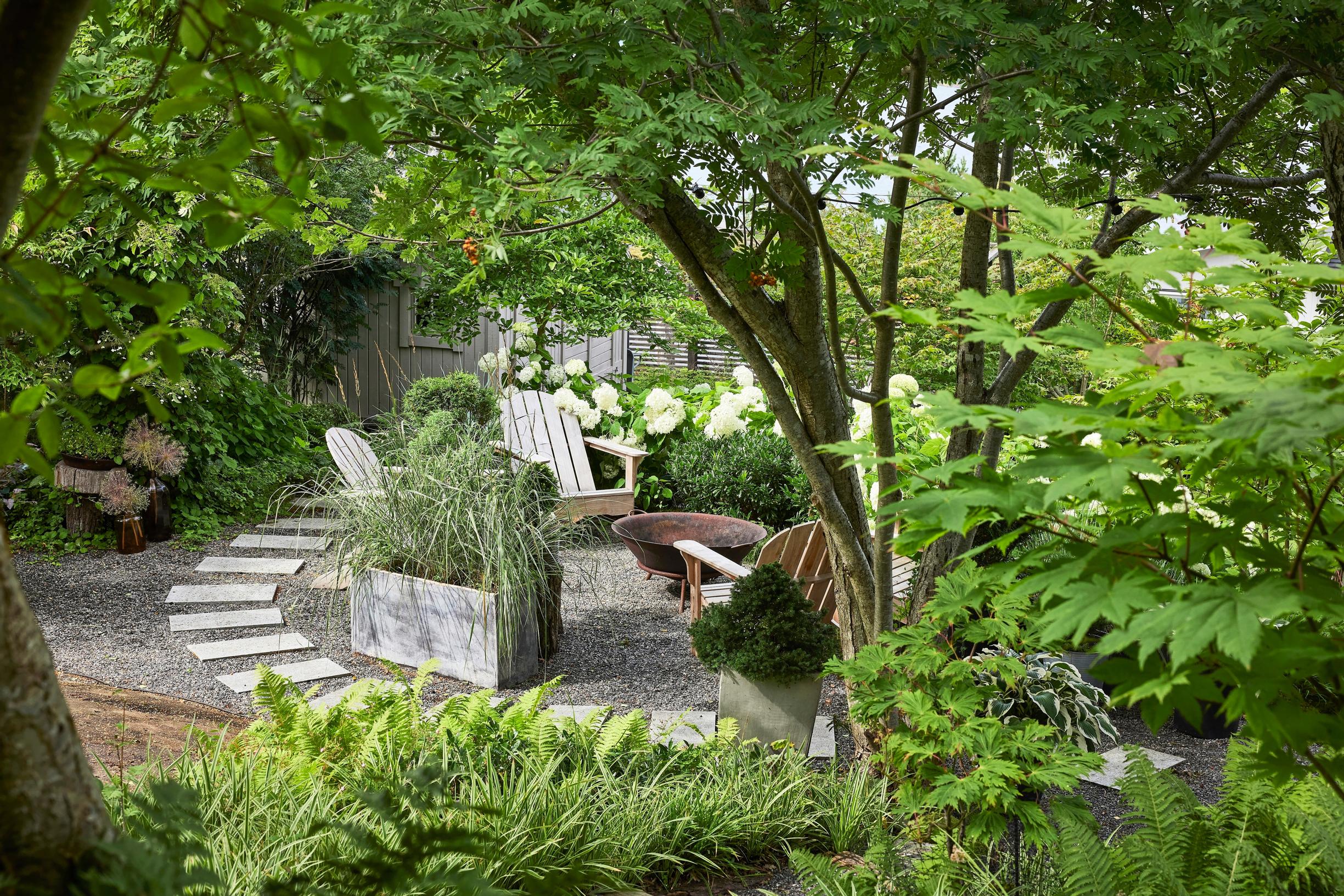
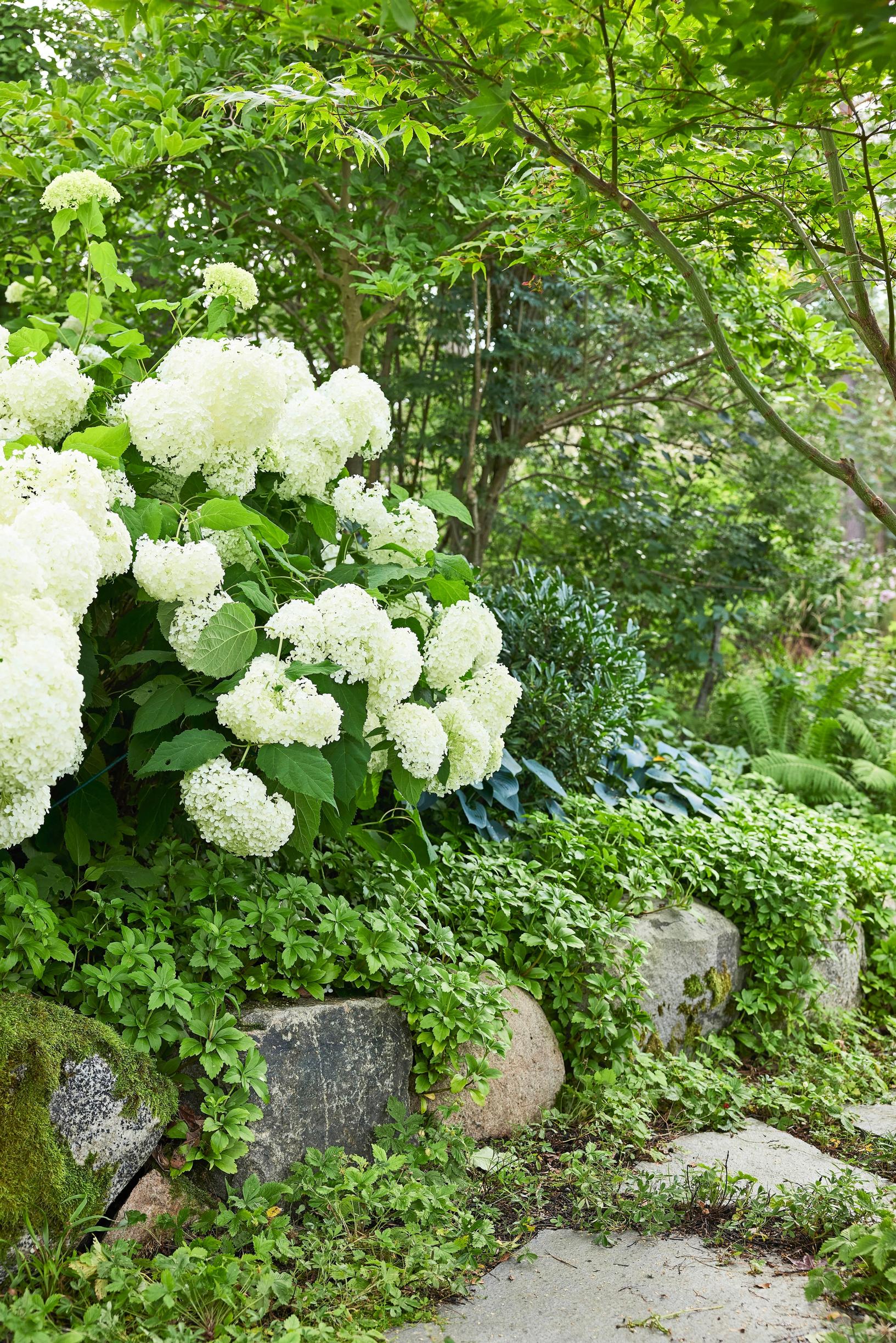
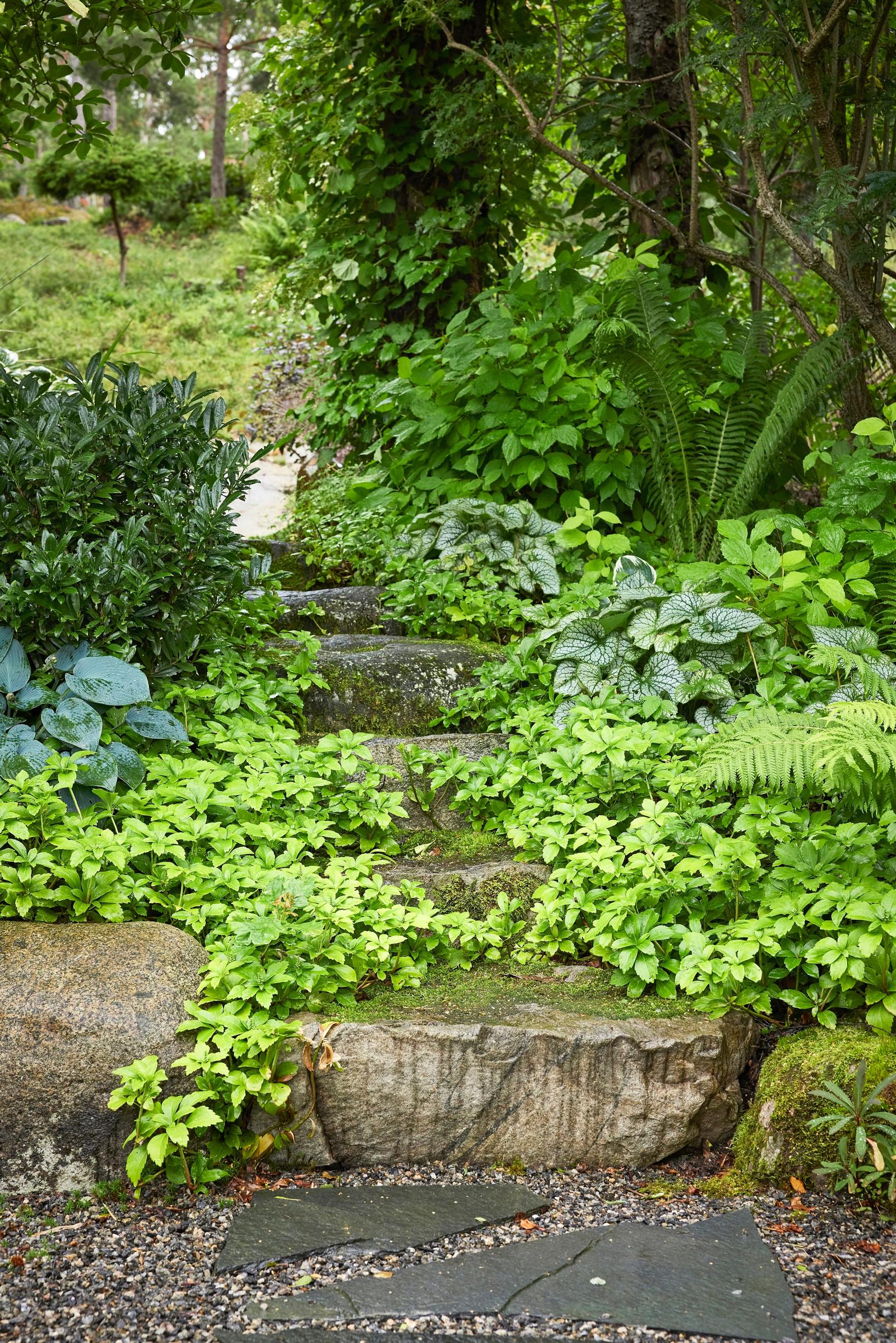
A lush garden naturally attracts some uninvited guests.
“Deer often come in, but I don’t want fencing. I want the garden to stay open to nature.”
She’s had to give up a few plants, but for the most part, the plants in her garden can handle deer visits. The three-toothed cinquefoil ‘Nuuk’ often gets eaten by deer in winter, but the hardy groundcover perennial always bounces back.
Shrubs and trees shield the view from the street and neighbors. You can strategically position plants to add privacy where needed. Johanna, for instance, planted dense-growing blue fountain bamboo for this purpose.
Besides deer, Spanish slugs are a headache in many Swedish gardens, including Johanna’s. Still, she’s realized you can live with them—slugs can be picky eaters, too.
“I’ve noticed that slugs mostly leave the bluish, thicker-leaved hostas alone, while green hostas get eaten.”
Early in the spring, Johanna sprinkles iron phosphate [in Finnish] in the garden, a product also approved for organic growing. She says that’s enough to keep this invasive species under control. When she walks around, she carries scissors to properly deal with any slugs [in Finnish] she spots.
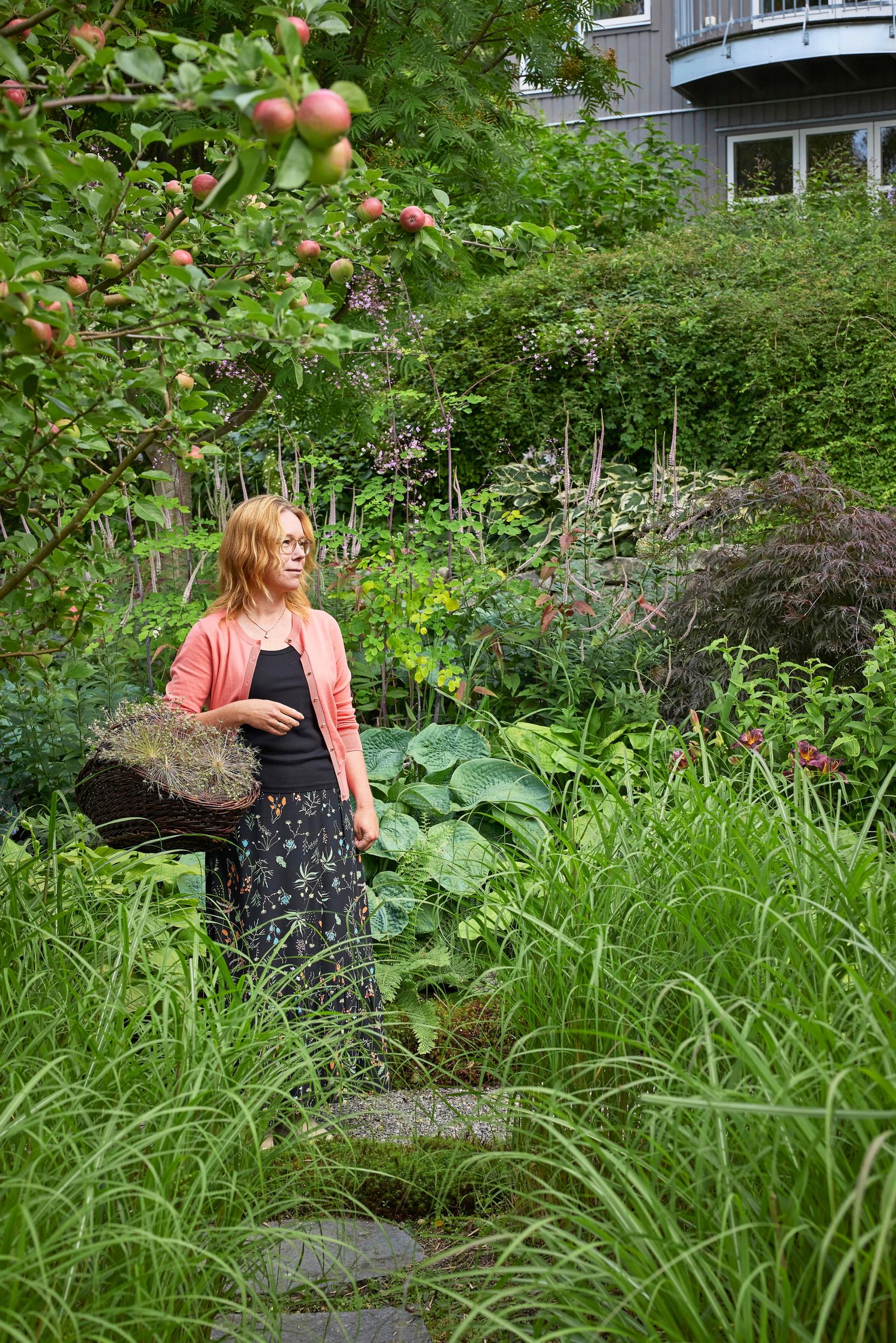
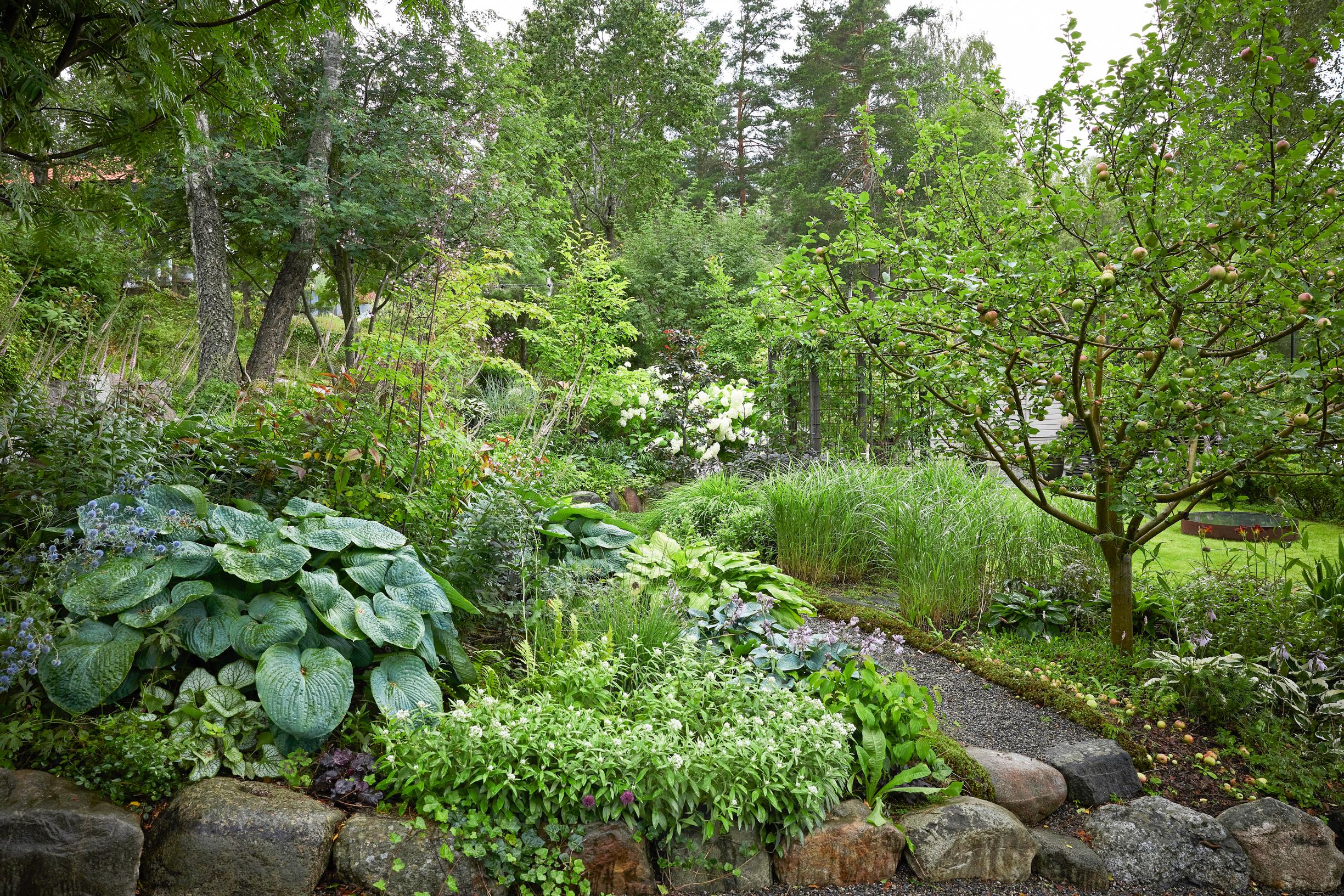
Before the garden became Johanna’s job, she spent many years working in IT as a consultant. Gardening was a cherished pastime.
“I felt my family was done hearing about all my plants. In 2017, I started an Instagram account to find like-minded friends.”
She quickly found an abundance of gardening pals, from around the globe. The Moosegarden account soon drew a wave of admirers, and Johanna began getting requests to design other people’s gardens. During the pandemic, she realized she truly wanted to work with gardens. She completed a degree in garden design remotely through the Oxford College of Garden Design.
“I’d earn more at my old job, but now I get to do something I love.”
One thing, however, hasn’t changed.
“I’m a total nerd—I just shifted my focus to plants. I don’t fully trust generic plant descriptions because they’re usually too vague. I look into where and how each plant grows in nature.”
Based on that research, Johanna decides whether a plant could thrive in her garden and, if so, gives it a try. One of her experiments is a quince tree—now as tall as an apple tree and bearing fruit, although quince is rarely seen this far north. Johanna uses its harvest to make marmalade.
Big and small experiments are sure to continue, and Johanna’s Moosegarden is far from complete.
“A garden is a living piece of art that’s always changing. When you have lots of trees, the light shifts as they grow, and you have to adapt what grows under them.”
